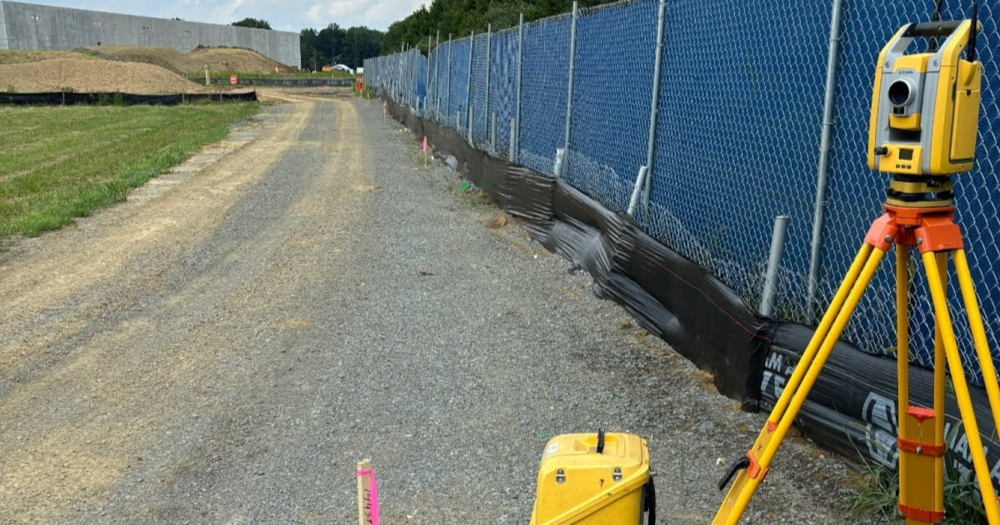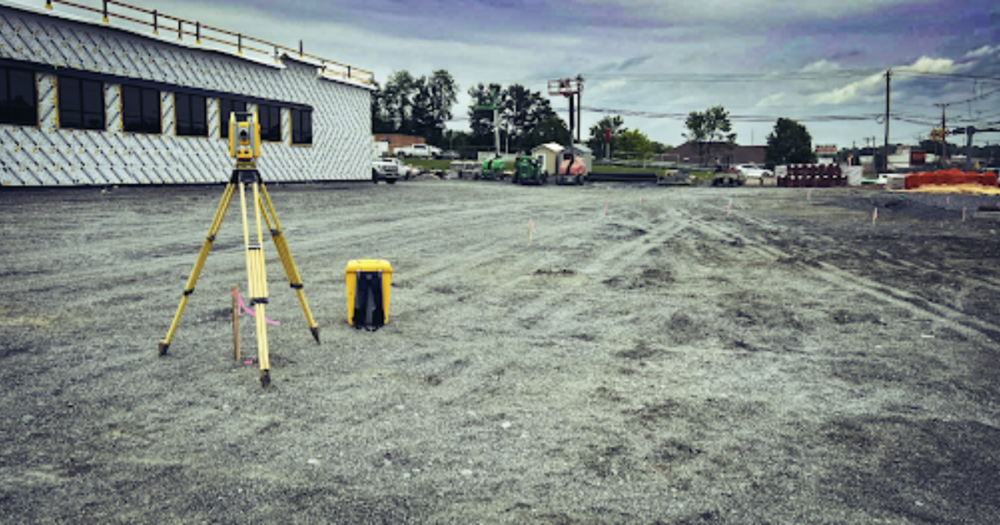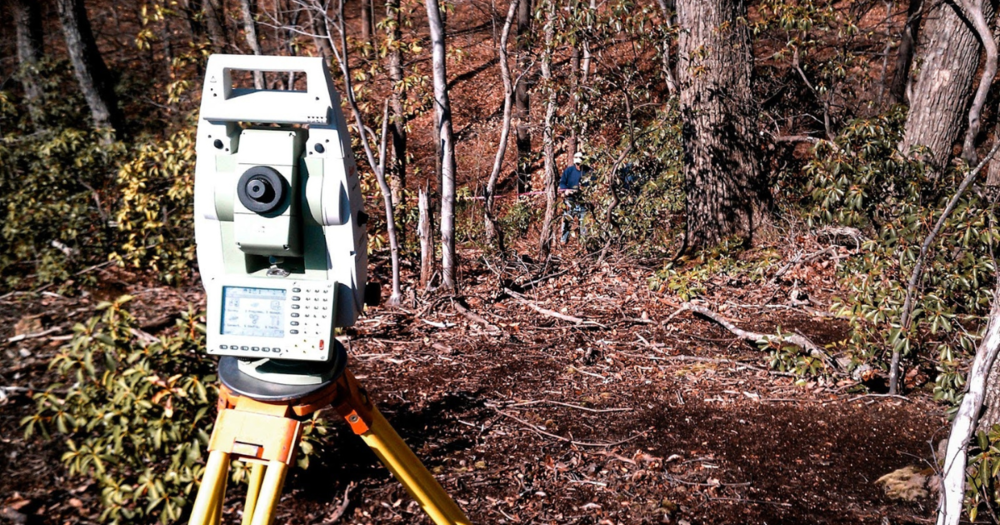
If you’re
shopping for a total station, the biggest question is: Should I go with a basic model or invest in a higher-end one? Here’s how to compare total station models and find the right fit for your work.
Differences Between Total Station Models
Let’s first take a look at the
key differences between the two models.
Measurement Accuracy and Range
- Entry-level models are solid for general site layout or basic construction work. They typically have a distance accuracy of 2–5 mm and a reflectorless range of up to 500–800 meters.
- Professional models pull ahead if you’re doing detailed land surveys or long-range work.These offerhigh-precision accuracy down to 1–2 mm, reflectorless range often over 1000 meters, and better reliability over long distances and uneven terrain.
User Interface and Software Compatibility
- Entry-level stations usually have simpler displays and more basic menus. They get the job done, but might feel clunky if you’re used to modern tech.
- Pro-level models have bigger screens, touch navigation, and software that works with advanced CAD tools or GIS systems. This means fewer errors, faster training, and smoother data processing.
Traditional vs. Robotic Operation
- Entry-level total stations are typically traditional and require two people to operate – one to aim and one to hold the prism.
- Professional total stations are usually robotic, meaning one person can operate them. You control the instrument remotely, and it automatically tracks the prism.
For a deeper understanding, read
Traditional or Robotic Total Station - A Guide to Picking the Right Tool.
Data Integration and Connectivity
- With an entry-level model, you might use USB or even SD cards to move files back and forth. That works, but it’s not fast.
- Advanced models often include Bluetooth and Wi-Fi, cloud sync, and compatibility with external data collectors, field software, and even mobile apps.
Durability and Weather Resistance
- Most total stations are built tough, but entry-level models usually have standard dust and water resistance.
- Professional-grade tools have higher IP ratings and better battery life for long, remote jobs.
Check out
How to Protect Your Surveying Equipment for protection tips on all your surveying gear.
Entry-Level Total Stations
If you're new to surveying or working on smaller-scale projects, an entry-level total station might be all you need. Here’s what makes them a smart choice.
What Entry-Level Total Stations Offer
Entry-level total stations are built for reliability and ease. While they lack all the advanced features of robotic models, they still offer the core functions needed for everyday tasks.
- Angle and distance measurement in one tool
- Simple user interface that’s easy to learn
- Manual operation (you’ll need a second person to handle the pole and prism)
- Reflectorless measurement within a limited range (often around 500–800 meters)
- USB or Bluetooth file transfers, depending on the model
They’re a great fit if you run a small firm, manage light
construction projects, or do entry-level site work.
Benefits of Starting with an Entry-Level Total Station
- Lower upfront cost: Good for tight budgets or teams that don’t need automation
- Fast setup and training: You can learn it quickly and get to work
- Reliable performance: Accurate enough for most construction and basic survey needs
- Compact and portable: Easier to carry and store
If your work doesn’t require long-distance shots, one-person operations, or real-time cloud syncing, this gear level provides everything you need.
Spotlight Model: Stonex R20 / R20 LR
The
Stonex R20 and R20 LR are standout options in the entry-level to mid-range category and great examples if you're looking to compare total station models that balance cost, performance, and ease of use.
Here’s what they bring to the table:
- Accuracy: 2" angular accuracy with reliable distance measurements
- R20 Range: Reflectorless up to 500 meters
- R20 LR Range: Reflectorless up to 1000 meters for longer-range needs
- Display: Bright dual-face screens with a user-friendly layout and onboard software
- Connectivity: Bluetooth, USB, and SD card support for flexible data transfer
- Construction layout, topographic surveys, site staking, and small boundary mapping
These models are an excellent fit for firms that need solid performance without the complexity or cost of robotic stations.
Spotlight Model: Stonex R25LR
The
Stonex R25LR builds on the R20 platform with better optics, stronger EDM capabilities, and extended range – all while keeping manual control for budget-conscious teams that don’t need robotics.
- Accuracy: 2" angular precision with enhanced distance measurement
- Range: Reflectorless up to 1000 meters
- Performance: Faster and more capable for higher-volume jobs than the R20
- Best for: Advanced stakeout, mid-sized topographic projects, and experienced survey teams
If your work demands a little more range and speed, but not full robotic features, the R25LR is a solid step up while keeping costs in check.

Professional-Grade Total Stations
If you're handling complex survey jobs, working solo in the field, or need top-tier precision, a professional total station is the way to go. These advanced tools are built for serious surveying work where accuracy, speed, and efficiency matter most.
What Professional Total Stations Offer
Professional-grade total stations pack more features and power than entry-level units. They’re designed for surveyors who need full control over long-distance shots, tight tolerances, and real-time data.
Here’s what you get:
- High angular accuracy, often 1" or better
- Long reflectorless range, typically over 1,000 meters
- Robotic control for one-person operation with auto-tracking
- Touchscreen interface with advanced field software
- Seamless data transfer using Bluetooth, USB, cloud, and software integration
- Weatherproof construction for harsh environments
In short, these are the tools you reach for when “close enough” just isn’t good enough.
Benefits of Going Pro
- Work solo with robotic tracking and remote control
- Save time with faster setup and automated measurement
- Boost precision for projects that can’t afford errors
- Handle any environment thanks to rugged construction and long battery life
- Get data fast with high-speed transfers and real-time processing
- Easier to integrate with GIS, BIM, and advanced mapping platforms
Professional total stations have a bigger price tag, but that investment will pay off in time savings, accuracy, and flexibility.
Spotlight Model: Stonex R60
The
Stonex R60 is a high-performance robotic total station built for demanding fieldwork. It combines speed, accuracy, and smart features that help surveyors work faster and more independently.
Here’s what stands out:
- Accuracy: 1" angular precision and distance accuracy of 1 mm + 1.5 ppm
- Motorization: Fast, smooth robotic movements for auto-target tracking and single-operator use
- Imaging: Built-in camera for visual confirmation, photo documentation, and remote targeting
- Data Handling: Onboard software for real-time coordinate calculations, CAD export, and seamless syncing with data collectors or cloud storage
- Best for: Large construction sites, road and bridge layout, topographic mapping, deformation monitoring, and high-accuracy control networks
It’s the total station that keeps crews productive, even in remote or tough-to-access sites.
Spotlight Model: Stonex R180
For teams that need full automation, the
Stonex R180 goes even further. This fully robotic total station is designed for high-efficiency workflows and single-operator control in any environment.
- Operation: Motorized unit with auto-targeting and robotic tracking
- Productivity: Ideal for one-person crews – save on labor while boosting efficiency
- Performance: Precision performance in busy, dynamic, or multi-site environments
- Best for: Infrastructure layout, monitoring and control surveys, and high-volume data capture across large area.
If your team is constantly on the move or managing multiple job sites, the R180 gives you the flexibility and power to stay ahead without an extra crew.
Choosing the Right Total Station for Your Needs

Picking the
right total station isn’t just about specs. It’s about how the tool fits into the way you work. The best choice depends on a few key factors: project size, terrain, data needs, and how experienced your team is.
Start with the Basics: What Do You Need It to Do?
Before you buy, ask yourself:
How big are your projects?
For small-scale site layouts or single-lot surveys, a traditional station like the Stonex R2 Plus might be all you need.
But if you’re laying out highways, subdivisions, or multi-phase jobs, you’ll likely want the speed and precision of a robotic station like the Stonex R60.
What kind of terrain do you work in?
Manual equipment is easier to use in flat, open areas.
However, auto-tracking and long-range reflectorless features will save hours of setup and repositioning in rough terrain or urban zones with line-of-sight issues.
How do you handle your data?
Need quick digital file transfers, CAD integration, or cloud syncing? Pro models offer better data processing and integration tools out of the box.
How experienced is your team?
Simple traditional stations keep the learning curve low for new crews or training environments.
Advanced users or field crews working solo will benefit from robotic tools that let them move faster with fewer mistakes.
When to Upgrade from Entry-Level to Pro Gear
An entry-level total station is a great starting point. But as your workload grows, your needs change. Here’s how to know it’s time to step up:
- You’re handling more jobs and spending too much time on setups and measurements.
- You need tighter accuracy and better consistency across multiple crews or locations.
- Your projects require a one-person operation, real-time data sharing, or advanced field software.
- You’re doing more rework due to manual errors or limited range.
If any of these sound familiar, upgrading to a professional total station will boost efficiency and reduce headaches.
When a Hybrid Setup Makes Sense
Hybrid solutions (where you use both traditional and robotic total stations) work well when:
- You have different teams with different experience levels.
- You need to support both small daily tasks and large-scale projects.
- Your budget allows you to upgrade slowly while still covering your current workload.
For example, you might use a Stonex R2 Plus for smaller stakeouts or utility layout and reserve the R60 for complex site control or high-volume survey work. This way, you stay flexible without overspending.
Start with the Right Tool for the Job
The best total station is the one that fits your workflow. When comparing total station models, don’t just look at the price or tech specs – look at how each option supports your team, your projects, and your long-term goals.
Baseline Equipment offers a full range of total stations to help you build the right setup, whether buying your first tool or expanding your fleet.
Not sure which total station to choose? Compare entry-level and professional models side by side to find the best fit for your surveying needs, budget, and workflow.

